Tech
12 Most Popular Versions Of Windows Ranked From Worst To Best
(CTN NEWS) – Which version of Windows a person prefers can be used to estimate their age.
You can guess what mine are as I have good recollections of Windows XP and Windows 98 SE, but I have coworkers who are much more enamored with Windows 7 or Windows 95.
The less said about Windows Vista, the better, as we all have something negative to say about it.
But ranking the various Windows versions is more than just when you started using computers. Microsoft’s past releases include both some highly notable failures and a few triumphs.
Here are all of the Windows versions, from greatest to worst, regardless of whether you can look back on some of Microsoft’s disastrous releases through rose-colored glasses or with true affection.
12. Windows ME
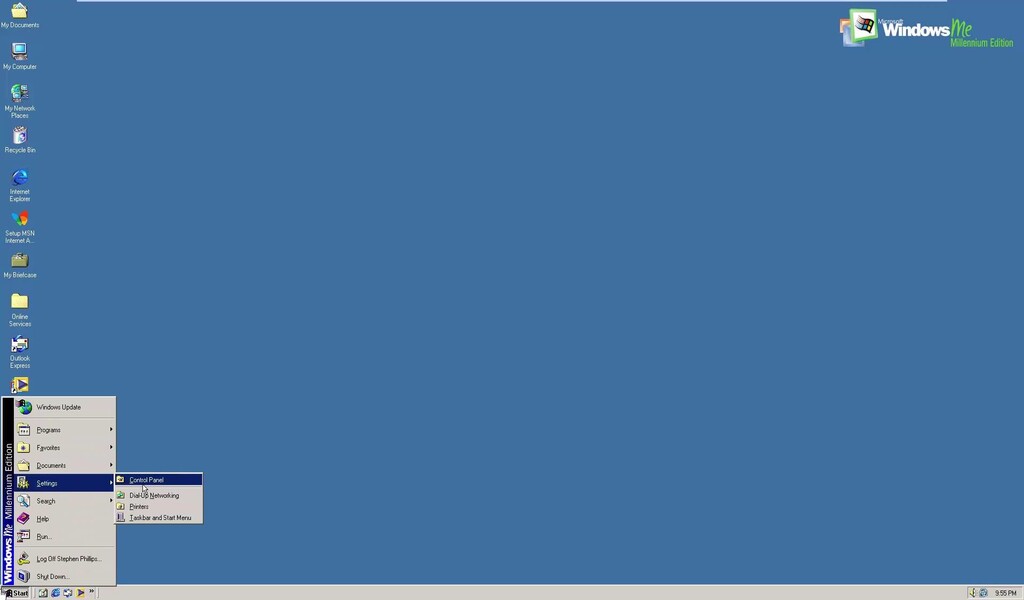
Windows ME
The question of which Windows operating system is the worst is debatable, but for us, Windows ME almost wins since, although having high ambitions, it fell short of almost all of them. In the end, Windows XP, which is adored and vastly superior, replaced it after only a year.
The final version of Windows to use MS-DOS, Windows Millennium Edition, limited access to DOS to speed up boot times.
This gave it the worst of all worlds because it prevented it from gaining the advantages of the Windows NT kernel, which served as the foundation for Windows XP, and also prevented it from offering proper DOS capabilities.
Windows ME has terrible stability problems and scant driver support. Not just once you had it operating, it was infamous for its propensity to crash.
Numerous reports of it crashing during installation and setup have been made, and much-touted features like System Restore frequently failed to protect afflicted systems as intended.
It made an effort to innovate by adding automatic security updates, native ZIP support for folder compression, and a redesigned Help and Support system to make troubleshooting simpler. But if the underlying OS is barely working, none of that matters.
We believe that Windows ME is the worst version of Windows ever since it was a complete disaster.
11. Windows 8
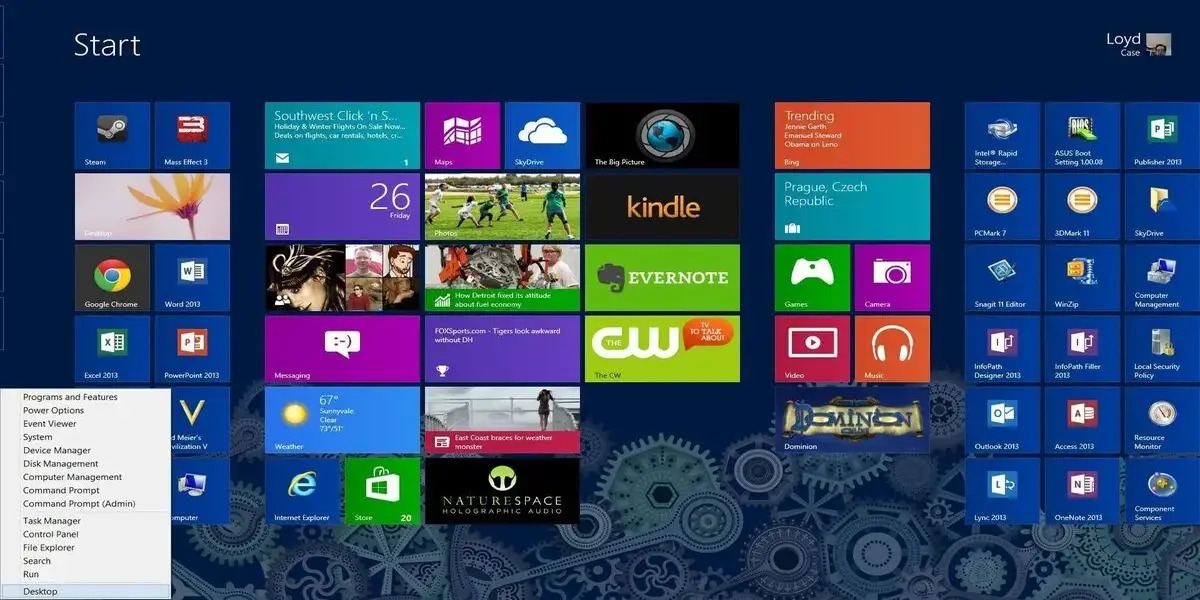
Windows 8
Microsoft appears to have pressed the panic button when creating Windows 8. Because the PC was becoming obsolete and tablets and smartphones were taking over the globe, Windows needed to be more tablet-friendly.
With its tile design and gesture controls, it attempted to better adapt the Windows desktop for the burgeoning tablet market, and to some extent, it was successful.
Unfortunately, expert and inexperienced desktop PC users found it extremely confusing, which immediately turned off loyal Windows supporters.
Microsoft had to patch in the original taskbar and Start button with Windows 8.1 because the situation was so awful; nevertheless, it was already too late.
Microsoft attempted to copy Apple’s success with the App Store with the initial release of the Windows Store and Universal Windows (UWP) programs, which were and continue to be a nightmare for all parties concerned.
By preventing DirectX11 from running on its new platform, Microsoft also attempted to lure gamers there. In addition, it failed.
10. Windows Vista
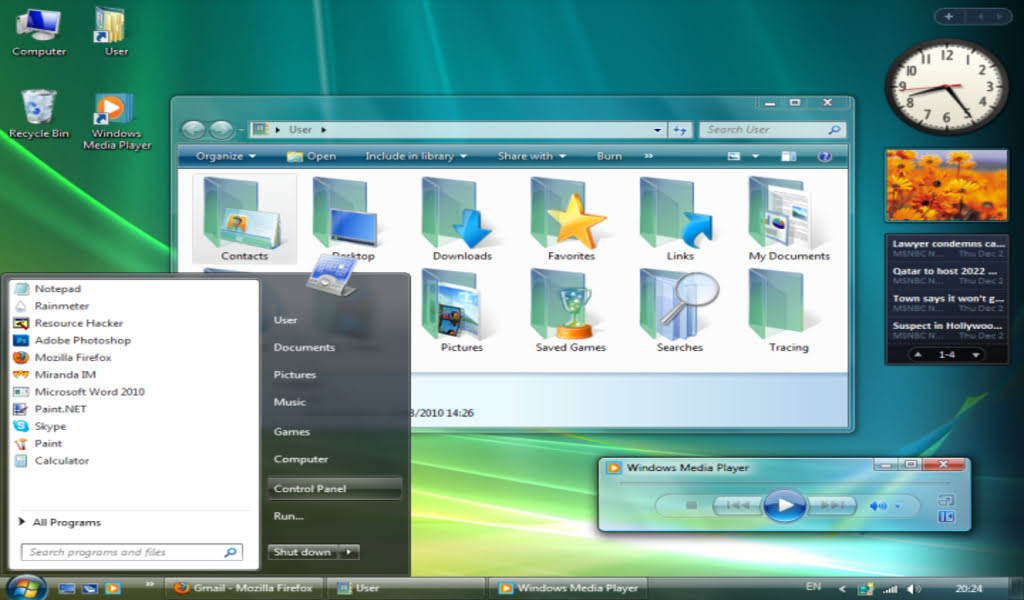
Windows Vista
How awful Windows Vista was has become somewhat of a meme. It frequently appears at the top of lists of the “Worst Windows,” however we believe that it is sometimes unfairly vilified.
At the time, installing it required a hardware setup that required a 1GHz processor, 1GB of RAM, and 15GB of storage space. It also required a graphics hardware with 128MB of VRAM that supported DirectX 9.
Even though it might not seem like much now, the storage and RAM requirements were ten times higher than those of Windows XP.
This ultimately meant that Vista ran horribly for many early adopters. Looking back, it’s clear what Microsoft was attempting, therefore it’s a great tragedy.
When Windows Vista first came out, it had many beautiful Aero transparency effects and looked wonderfully contemporary.
It was further hurt by the incompatibility with previous drivers, necessitating the slow or nonexistent release of new ones for practically everything, making it difficult for attachments and peripherals.
Soon after, Windows Live games were released, and along with Vista, they signalled a low period in PC gaming where nothing worked properly and performance was appalling.
Nobody liked the new User Account Control pop-ups that requested for admin clearance, and widgets were also not well-liked.
It made no difference that most of these features made a comeback in Windows 7 a few years later and got considerably better reviews. Few people have fond memories of Windows Vista since it was too fresh and released too quickly.
9. Windows 1
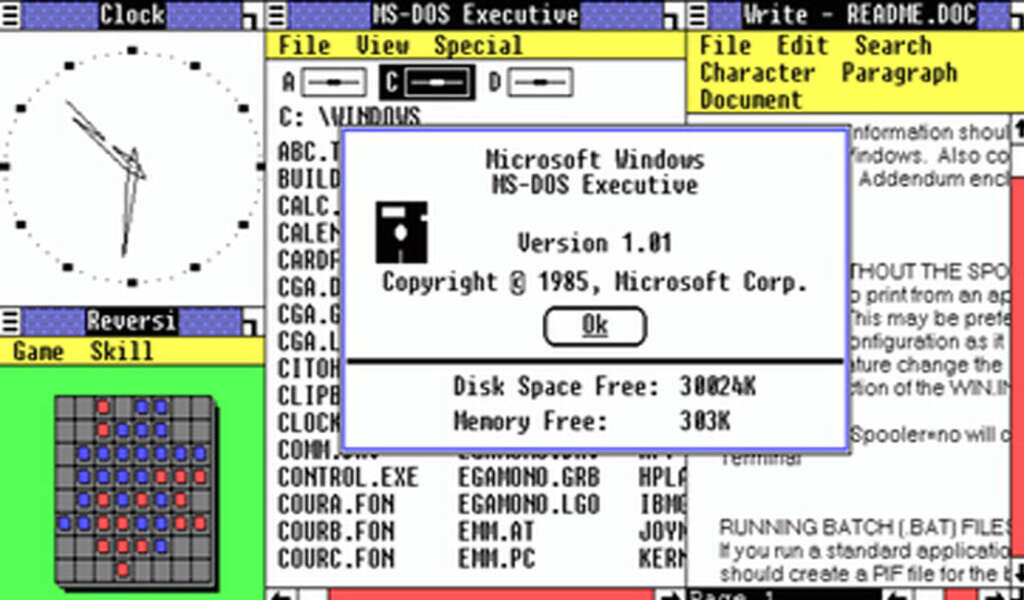
Windows 1
The first major Windows release should be higher on this list, but the first attempt at an operating system wasn’t much of an operating system — at least how we know them today.
It was incredibly limited in its operation, without the ability to overlap windows or many of the programs that made Windows such a functional platform over the years.
However, Windows 1 still has its place in history. It was built on top of MS-DOS as a shell program known as MS-DOS Executive, and opened up all sorts of potential for the platform.
It introduced the mouse as an interface device and launched classic Windows programs like Calculator, Paint, and Notepad.
Unfortunately, Windows 1 wasn’t well-received, even at the time. Reviewers felt it couldn’t adequately compete with Apple’s GUI operating system and criticized its speed and poor compatibility with existing software.
Some bemoaned its reliance on mouse inputs, particularly those used to keyboard-exclusive interfaces.
8. Windows 2
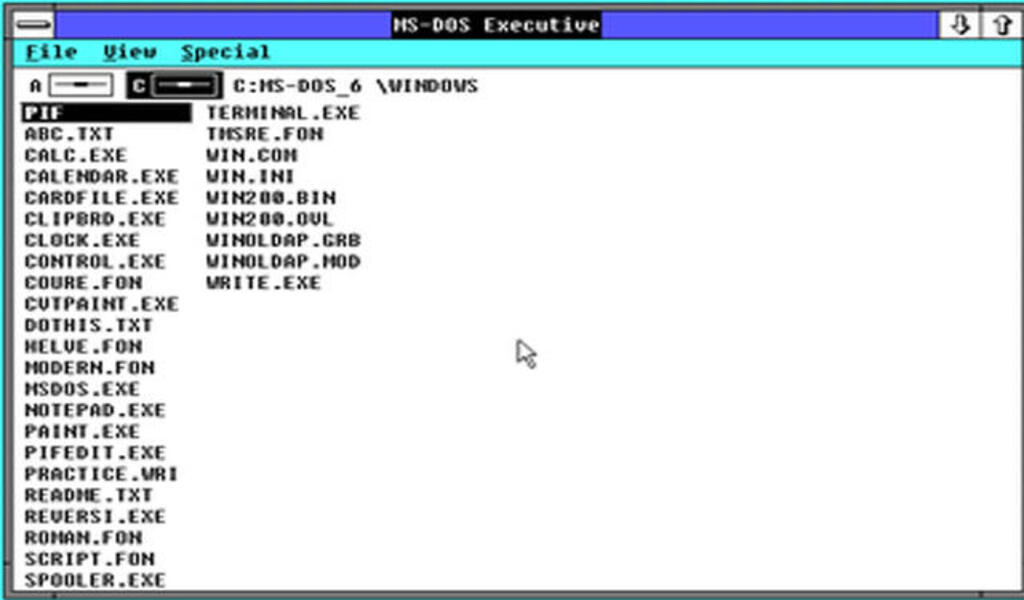
Windows 2
Although Windows 2 wasn’t as popular as Windows 3.0/3.1, it significantly improved over similarly constrained Windows 1.
Despite adding the ability to overlap and resize windows (a crucial feature absent from Windows 1), support for 16-color VGA graphics, and desktop icons, it was still not completely competitive with Macintosh OS.
It replaced Windows 1’s “Iconize” and “Zoom” commands with crucial language like maximize and minimise.
However, the software that came pre-installed with Windows 2 was arguably more significant than the operating system itself.
The Windows Calculator and Windows Calendar were only two of the many useful default programs included in Windows 2. It also had compatibility with Excel and Word, two widely used Microsoft programs.
7. Windows 95
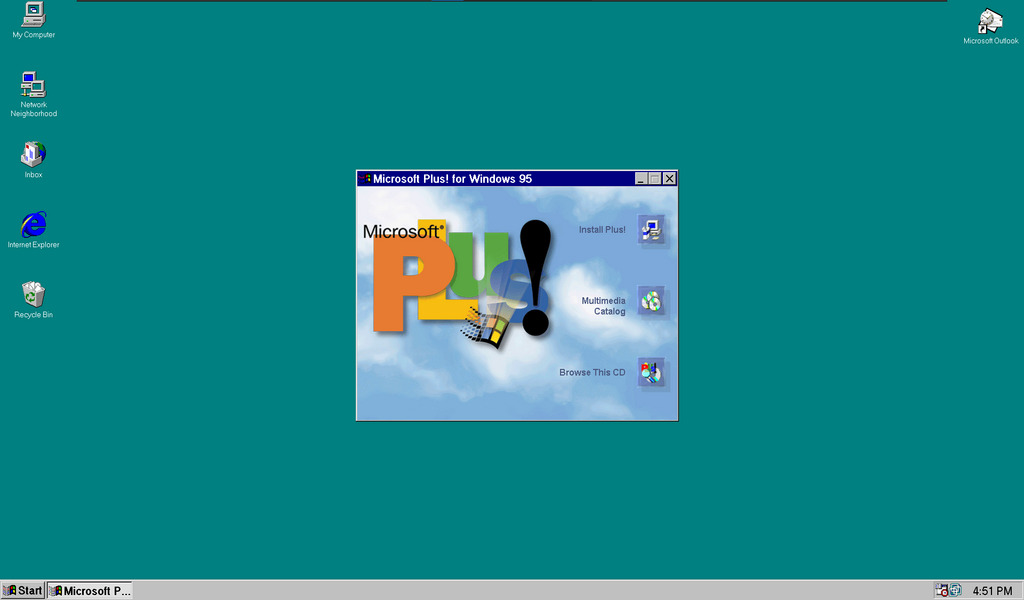
Windows 95
The operating system Windows 95 sets the standard for how Windows will seem for many years.
It also made it easier to categorize programmes by nesting apps within submenus, introducing the now-iconic Start menu, and enhancing organization in the visually cluttered interface.
It filled the space between the MS-DOS foundation and the graphical front end, allowing for the development of new games and applications while maintaining compatibility with the more established ones. at least conceptually.
Windows 95 introduced modern desktop computing to the world but was prone to crashes, and it took the release of Windows 98 to fix many of its issues.
It would become Microsoft’s most popular operating system of the decade, controlling over 60% of the PC market long into the late 1990s.
The taskbar, additional keyboard shortcuts, the recycle bin, and file shortcuts were other significant new features that have since become standard and make it simpler to find what you need.
6. Windows 98
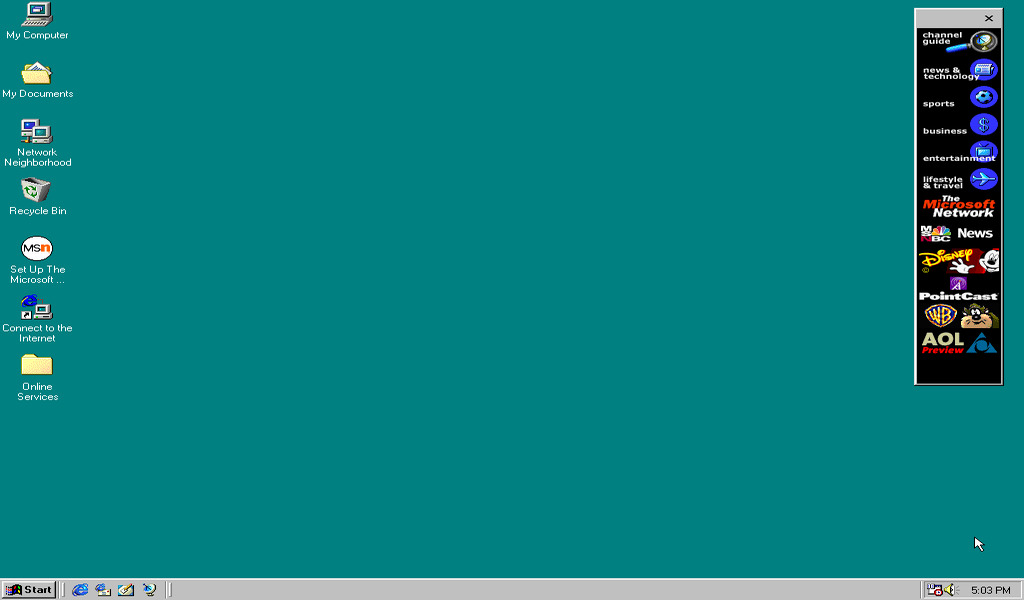
Windows 98
Windows 98, the first genuine internet-capable Windows operating system, had calculated the wind’s direction and was frantically trying to get ahead of it.
Internet Connection Sharing, the now-iconic Windows Update, and a mature version 4.0 of Internet Explorer were all launched. Additionally, it improves USB functionality, driver compatibility, and DVD player support.
Windows 98 was favorably regarded when it was first released since it was intended to be a significant update to Windows 95 rather than reimagining the wheel.
A year later, the Second Edition (SE) improved it even more with many bug fixes and UI changes. Although it still retained a strong MS-DOS foundation, it was much more stable than Windows 95 and had begun to move past the limitations of the Command Prompt.
Some of the most influential video games of the decade also found a home on this operating system. Age of Empires, Half Life, and the first Unreal all contributed to Windows 98 becoming the leading desktop gaming platform.
Given that Windows 98 is an updated version of Windows 95 with fewer flaws, users were initially a little miffed that it was being sold as an independent operating system. Nevertheless, it was better and deserved its spot on this list.
5. Windows 11
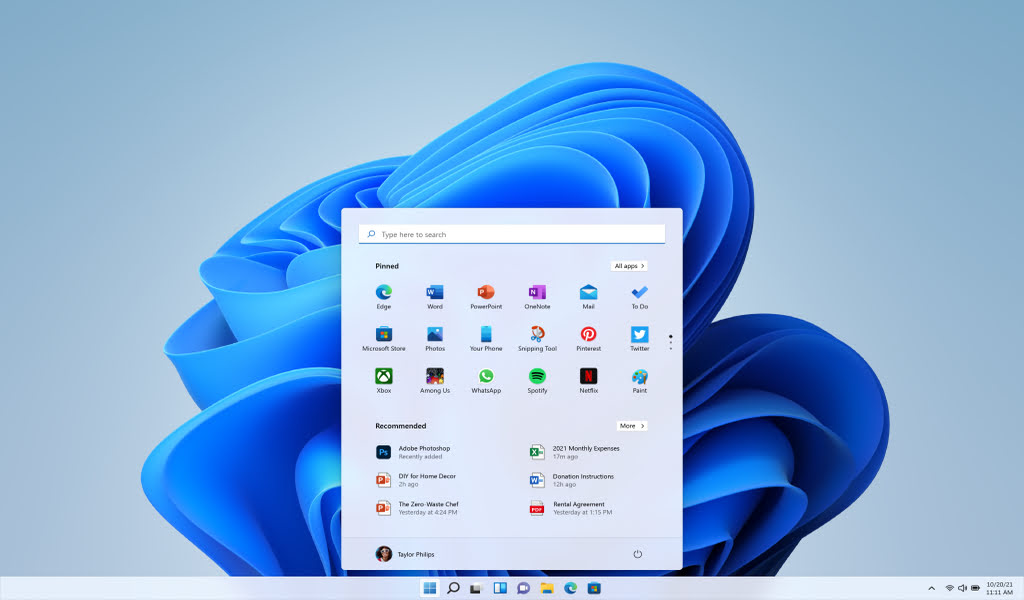
Windows 11
Despite having much to prove, the new kid on the block is immediately making an impression.
Windows 11 could have collapsed like Windows 8 after drastically altering the Start menu and taskbar, but it didn’t.
Although the appearance may have altered, Windows 11 is still largely a Windows 10 advancement.
Removing some of the outdated Windows 7 interfaces, streamlines the overall user experience and makes it more appealing by using transparency effects from some of Windows’ rival operating systems.
Additionally, you may run several instances of your desktop simultaneously and switch between them to increase productivity and compartmentalization.
Windows 11’s native support for Android apps blurs the distinctions between it and its Chrome OS rivals once again, and despite the Microsoft Store’s less aggressive promotion, it has been expanded with new support for Win32 programmes like Firefox and the Epic Games Store.
Windows 11 seeks to entice them over with a few new features, given how much Windows 10 has evolved into the home of contemporary PC gamers. It includes support for AutoHDR and DirectStorage and has improved windowed game efficiency.
Even while it might take many years for Windows 11 to surpass the modest Windows 10, if adoption rates keep increasing, eventually it will overtake Windows 10. If Microsoft doesn’t replace it earlier.
4. Windows 3.1
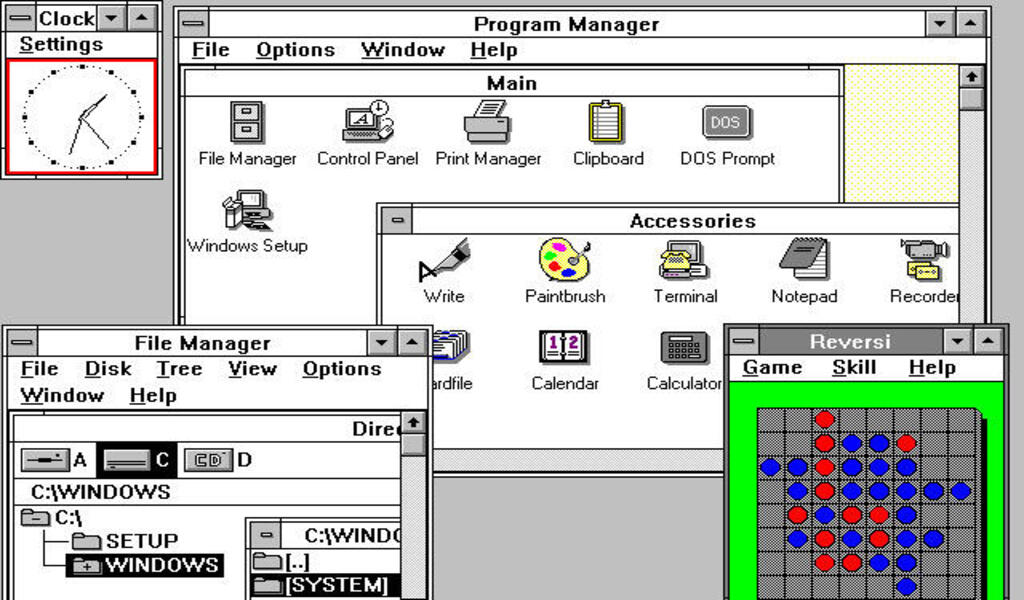
Windows 3.1
Windows 3.1 was the first version of Windows that many people born in the ten years before its release had ever used, much like Windows XP.
Under multiple layers of ease and usability, all of which had been heaped up through the past generations of Windows to produce something truly useable, its harsh white and grey coloring concealed its DOS roots.
Today. Windows 3.1 would only be a significant content upgrade to the operating system, but back in the 1990s, it was a significant release that came with its box and stack of installation floppy discs.
Building on Windows 3.0’s popularity, Windows 3.1 was a breakthrough that helped IBM sell millions of PCs soon after its release.
It converted Windows machines into powerful word processors and publishing machines by introducing the hugely significant TrueType font system.
With this version of Windows, dragging and dropping files became suddenly available, enhancing its adaptability and user-friendliness.
Additionally, it introduced screensavers, which became such a prominent visual component of desktop computers moving forward that they will always be associated with the operating system for some people.
3. Windows 10
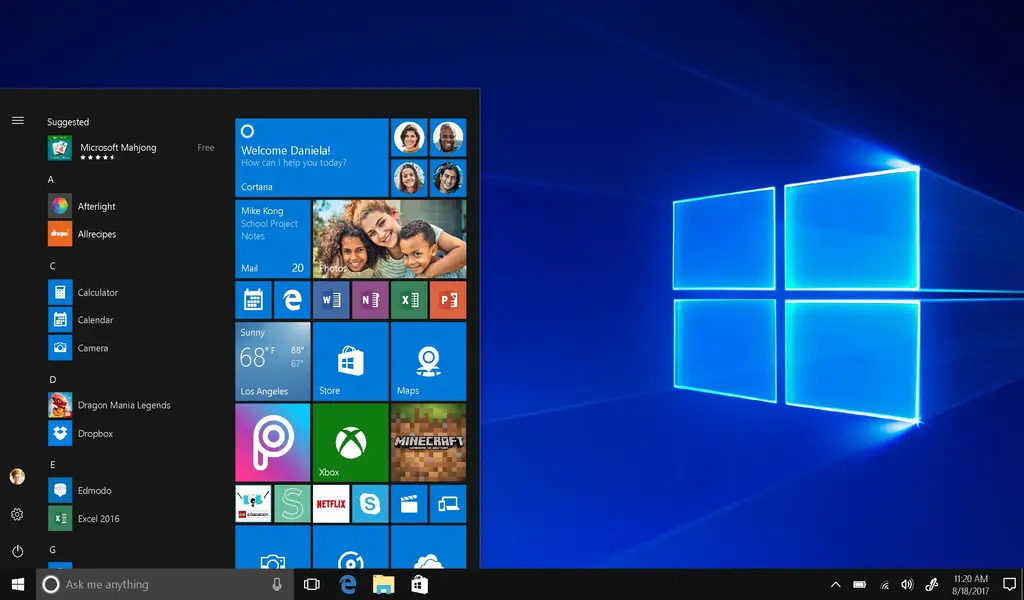
Windows 10
Windows 10 was a success following a failure, just like the previous top contenders on this list, which made it even sweeter.
After experiencing the designed-for-tablets interface for the first time with Windows 7, those of us who bypassed Windows 8 found that Windows 10 was a more comfortable place to call home.
It was quick, packed with features, and made with desktop use in mind while still maintaining cutting-edge touch compatibility. Simply put, it improved Windows into what it essentially is still today.
The Edge browser was introduced with Windows 10, ending Internet Explorer’s reputation as a haven for exploits.
It incorporated additional login options, including fingerprint and facial recognition, revamped the Start menu to be much more useful, and increased scaling for better high-resolution compatibility.
It did promote online Microsoft accounts over more conventional login methods and placed the Microsoft Store front and center. Windows 10 undoubtedly gave birth to the concept of Windows as a service and significantly increased data collecting.
It wasn’t a good idea to force Cortana on everyone, either.
Nevertheless, Windows 10 has been demonstrated to be the Windows 7 of its period, as the majority of PC users have continued to use it more than a year and a half after the launch of its replacement.
It is currently withstanding the test of time and appears to do so for many years to come.
2. Windows XP
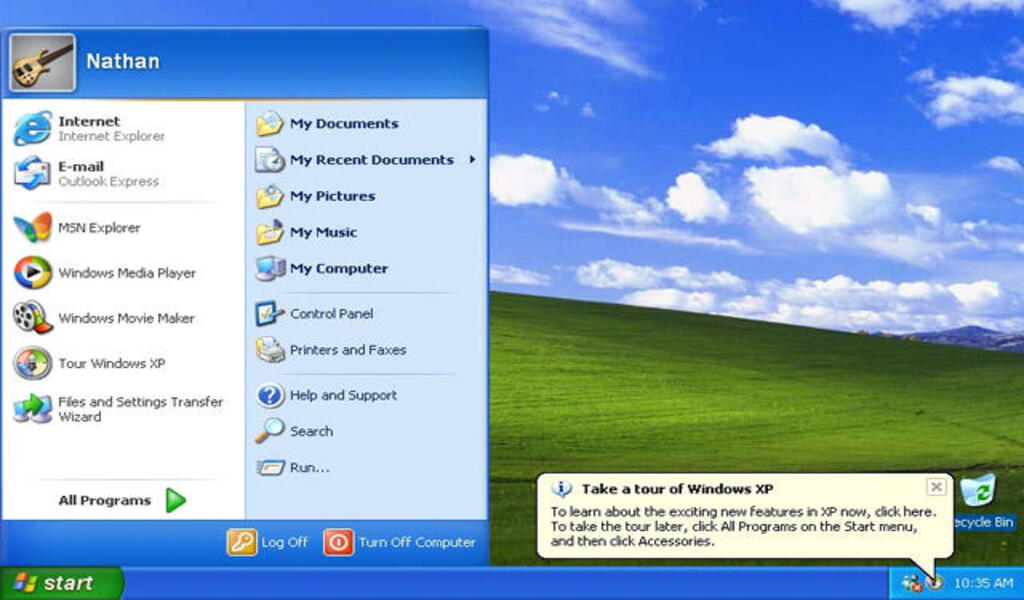
Windows XP
Microsoft made an incredibly impressive comeback with Windows XP after the dumpster fire that was Windows ME. Many people have used this operating system for the first time, and given Vista’s shortcomings, they have frequently used it for more than ten years.
It was the operating system that made the World Wide Web accessible to millions of people, ensured that grandparents everywhere would continue to confuse Internet Explorer with the web browser.
And made it possible to communicate using a variety of well-liked chat apps. Young PC users were given their first taste of the outside world thanks to MSN Messenger, AIM, and ICQ, and they were able to share data like never before thanks to Limewire, Kazaa, and eDonkey.
Windows XP has one of the most recognizable looks of any of the operating systems on this list. Because of the rolling hills background as well as the green Start button.
Additionally, it included several highly powerful built-in programs, including Solitaire, Windows Media Player, and Windows Movie Maker.
But because it was limited to 32-bit, Windows XP could never support more RAM than 4GB, which restricted its use until 64-bit processors became available.
Over time, it gained a reputation for malware as well because to Internet Explorer’s reputation as a leaky sieve and the absence of Windows-specific security solutions.
Despite Microsoft’s nearly decade-long campaign to promote upgrades, Windows XP has a strong history and is still used on PCs worldwide.
2. Windows 7
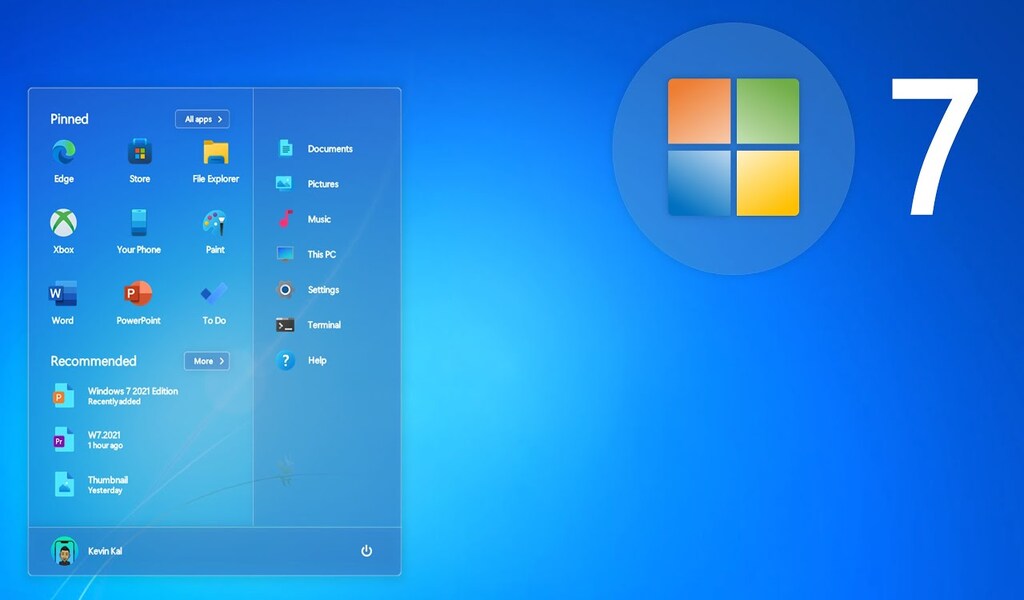
Windows 7
It might be argued that Windows 7 is simply a more advanced version of Windows Vista that was introduced when consumers really had the hardware to support it.
However, the king of Windows updates accomplished much more than that. It was quick and responsive with several significant cosmetic improvements over earlier Windows versions.
It introduced significant features that are still essential to Windows today and had good compatibility with both older hardware and software.
It made it possible to pin apps to the taskbar, stack windows for better organization, preview windows using taskbar thumbnails, and snap windows to various screen parts.
Additionally, Windows 7 is significant for what it lacks.
It reminds me of the previous version of the Windows operating system, which was quick and cutting-edge but hadn’t yet chased after features made for other platforms, like touch-targeted UI components or integrated smart assistants.
There was no attempt to force you to log in with an online account, the Microsoft Store, or excessive data collecting.
If Microsoft and contemporary hardware still supported it, it would likely be a popular operating system that many people would continue to use.
RELATED CTN NEWS:
VPNs: The Ultimate Guide For 2023
Soon, WhatsApp Will Have a Camera And Photo Editing Feature
Get a 51% Discount On This Refurbished Microsoft Surface And Keep Your Resolutions For 2023 In Check

Tech
US: A Judge Mandates that Google Allow Competing App Stores to Access Android

(VOR News) – The ruling is that Google, the greatest technology firm in the world, is required to make its Android smartphone operating system available to merchants that supply applications that are in direct rivalry with Google’s. This decision was reached by a judge in the United States of America.
The Android Play store, which is owned and operated by Google, was found to be an example of an illegal monopoly arrangement by a jury in the state of California on Monday. The finding was reached by a jury. Monday is the day that this decision was come to.
An earlier federal judge ruled Google’s search engine illegal.
This finding, which came after that decision, has forced the company to suffer yet another setback. As a result of the corporation having already encountered its initial obstacle, this decision has been established. This particular decision was made by the judge during the month of August, when the month was in progress.
In light of the fact that the decision was made, what exactly does it mean that the choice was accepted?
In accordance with the verdict, Google is obligated to make it possible for users to download Android app stores that are offered by third-party competitors. For a period of three years, the corporation is prohibited from imposing restrictions on the usage of payment mechanisms that are integrated into the application.
In addition, it is important to keep in mind that Google does not possess the right to impose restrictions on the utilization of ways to make payments online.
Additionally, the verdict makes it unlawful for Google to give money to manufacturers of smartphones in order to preinstall its app store. Smartphone manufacturers are prohibited from doing so.
Furthermore, it prevents Google from the possibility of sharing the revenue that is generated by the Play store with other companies that are in the industry of delivering mobile applications.
In addition to this, the court has mandated the establishment of a technical committee that will be made up of three different people chosen at random.
The committee will be responsible for monitoring the implementation of the reforms and finding solutions to any disagreements that may occur as a consequence of the implementation of the reforms while they are being implemented. This task will fall under the committee’s purview so that it may fulfill its duties.
However, certain components were allowed to be put into action until July 1st, despite the fact that the judge’s statement suggested that the ruling would take effect on November 1st. The statement was the basis for the ruling, which ultimately became effective.
Particularly, I wanted to know what Google’s reaction would be.
There is a fact that Google does not adhere to this directive, which has been brought to their attention. This document argued that the alterations that the judge had ordered to be made would “cause a range of unintended consequences that will harm American consumers, developers, and device makers.”
The judge had ordered the modifications to be implemented. The alterations were to be carried out as indicated by the judge’s ruling. The judge made it clear that he expected these revisions to be carried out in accordance with his guidance.
The company’s regulatory affairs vice president, Lee-Anne Mulholland, provided the following statement: “We look forward to continuing to make our case on appeal, and we will continue to advocate for what is best for developers, device manufacturers, and the billions of Android users around the world.”
On average, over seventy percent of the total market for smartphones and other mobile devices is comprised of mobile devices that are powered by the Android operating system. Both smartphones and other small mobile devices are included in this category.
In the event that the Play app store continues to be shown on the home page and that other Google applications are pre-installed prior to the installation of the Android application, smartphone manufacturers are entitled to install the Android application at no cost at their discretion.
Additionally, the Android application can be installed on devices that are manufactured for smartphones.
SOURCE: DWN
SEE ALSO:
Over The Planned “Link Tax” Bill, Google Threatens to Remove NZ News Links.
Tech
WhatsApp Now Features a “Mention” Tool for Status Updates and Stories.

(VOR News) – Those who use WhatsApp now have the ability to mention other people in their stories or status updates as a consequence of a feature that was only recently enabled on the platform.
Previous to this point, this capability was not available. It wasn’t until quite recently that this capability became available to the public.
According to the information that was provided by the company, users now have the opportunity to tag close friends in their stories, and the person who is mentioned will have the option to go back and re-share an earlier version of that story. This information was provided by the company. The corporation was kind enough to reveal this information to us.
Because of a new feature that has been added to the WhatsApp app, users now have the opportunity to like individual stories and status updates.
This capability was previously unavailable to WhatsApp users.
A significant amount of progress has been made in this context. Alternative readers now have the chance to “like” a work, which is comparable to liking a post on Facebook. This feature was introduced in recent years. When compared to the past, this is a tremendous shift.
At one point in time, viewers were only permitted to observe the total number of views that a particular story had gotten. These restrictions were eliminated in later versions of the software.
Additionally, it is essential that the likes and reactions to a story be kept anonymous during the entire process. One of the factors that contributes to the general mystery that surrounds this characteristic is the fact that this is one of the elements.
The person who brought it to the attention of others is the only person who will be able to judge who enjoyed it and who did not care about it. These individuals will be able to make this determination.
A notification will be issued to the individual who was referenced earlier in the sentence and who was named in the story or status update that was discussed. A notification of this nature will be sent to the individual via WhatsApp.
This message will be sent to the user in question whenever that person makes a reference to another person while they are in the process of elaborating on a narrative or updating their status. You will receive a notification alerting you that you have been tagged in the narrative.
This notification will be delivered to the person who receives this message. In addition, students will be provided with the opportunity to re-share the tale for themselves.
It is important to note that if the names of individuals who have been referenced in a narrative or a status update are included in any of these, then the names of those individuals will not be accessible to any third party through any of these. In light of the fact that the identities of those individuals will be concealed from public disclosure, this is the condition that will be required.
While WhatsApp recently made the announcement that it will be incorporating this functionality, it is highly likely that not all users will have access to it at the same time.
This is despite the fact that WhatsApp recently made this announcement.
Despite the fact that WhatsApp has only recently made a public announcement that it will move forward with the deployment, this is the situation that has presented itself.
As soon as a short period of time has elapsed, access will be made available to each and every person on the entire world.
Additionally, WhatsApp has hinted that new functionalities might be introduced to the status and updates tab in the future months.
The purpose of these capabilities is to provide users with assistance in maintaining healthy connections with the individuals who play a vital role in their living experiences. This is done in order to give users with support in maintaining close relationships with the folks who are the subject of the inquiry.
It is with the purpose of supporting users in successfully keeping close ties with the individuals in question that this step is taken.
SOURCE: DN
SEE ALSO:
Over The Planned “Link Tax” Bill, Google Threatens to Remove NZ News Links.
Accenture and NVIDIA Collaborate to Enhance AI Implementation.
Tech
Over The Planned “Link Tax” Bill, Google Threatens to Remove NZ News Links.

(VOR News) – Google has sent a strong message to the New Zealand government, threatening to stop boosting local news content should the Fair Digital News Bargaining Bill become law.
The law, put up by the Labour government and backed by the coalition in power at the moment, mandates that digital companies such as Google pay back news organizations for links to their material.
News publishers, on the other hand, charge the tech giant with “corporate bullying.”
Google says this measure may have unanticipated effects.
Google New Zealand’s country director, Caroline Rainsford, voiced her worries that the law, which is being referred to as a “link tax,” is not doing enough to support the media industry in New Zealand right now.
She underlined that Google would have to make major adjustments if the previously mentioned law were to pass, including cutting off links to news articles from its Search, News, and Discover platforms and cutting off financial ties with regional publications.
According to Rainsford, similar legislation has been proposed and approved in other nations including Australia and Canada, but it has not been proven to be effective there and breaches the principles of the open web.
She drew attention to the fact that smaller media outlets will be most negatively impacted, which will limit their capacity to reach prospective audiences.
Google says its alternative options will protect smaller, local media from negative effects.
Conversely, it conveys apprehension regarding the possible fiscal obligations and vagueness of the legislation, which it feels generates an intolerable level of ambiguity for enterprises functioning within New Zealand.
The New Zealand News Publishers Association (NPA) has reacted to Google’s warnings by alleging that the internet behemoth is using coercive tactics.
They specifically contend that the need for regulation stems from the market distortion that Google and other tech giants have created, which has fueled their expansion into some of the most significant corporations in global history.
The legislation aims to create a more equal framework that media businesses can use to negotiate commercial relationships with technological platforms that profit from their content.
New Zealand Media Editors CEO Michael Boggs stated that he was in favor of the bill, citing the fact that Google now makes a substantial profit from material created by regional publications.
He also emphasized that the use of artificial intelligence by Google—which frequently makes references to news articles without giving credit to the original sources—highlights the significance of enacting legislation.
Paul Goldsmith, the Minister of Media and Communications, has stated that the government is now evaluating various viewpoints and is still in the consultation phase.
He stated that the government and Google have been having continuous talks and will keep up these ongoing discussions.
However, not all political parties accept the validity of the Act.
The ACT Party’s leader, David Seymour, has voiced his displeasure of the proposal, saying that Google is a game the government is “playing chicken” with. He threatened the smaller media companies, saying that they would suffer from worse search engine rankings if the internet giant followed through on its promises.
Seymour contended that it is not the government’s responsibility to shield companies from shifts in the market brought about by consumer preferences.
The things that have happened in other nations are similar to what has happened in New Zealand.
Google has agreements with a number of Australian media firms that are in compliance with its News Media Bargaining Code. These agreements contain provisions that permit an annual cancellation of these agreements.
Due to the government’s decision to exempt Google from the Online News Act, the company has committed to supporting news dissemination by contributing annually to the Canadian journalistic community.
The New Zealand measure is consistent with global approaches aimed at regulating the relationships that exist between technology corporations and media organizations.
It’s hard to say what will happen with the Fair Digital News Bargaining Bill as the discussion goes on. Google and the New Zealand media landscape are preparing for what might be a protracted legal battle.
SOURCE: TET
SEE ALSO:
Accenture and NVIDIA Collaborate to Enhance AI Implementation.
-

 News4 years ago
News4 years agoLet’s Know About Ultra High Net Worth Individual
-
Entertainment2 years ago
Mabelle Prior: The Voice of Hope, Resilience, and Diversity Inspiring Generations
-
News11 years ago
Enviromental Groups Tell Mekong Leaders Lao Dam Evaluation Process Flawed
-

 Health4 years ago
Health4 years agoHow Much Ivermectin Should You Take?
-

 Tech3 years ago
Tech3 years agoTop Forex Brokers of 2023: Reviews and Analysis for Successful Trading
-

 Lifestyles3 years ago
Lifestyles3 years agoAries Soulmate Signs
-

 Entertainment3 years ago
Entertainment3 years agoWhat Should I Do If Disney Plus Keeps Logging Me Out of TV?
-

 Health3 years ago
Health3 years agoCan I Buy Ivermectin Without A Prescription in the USA?